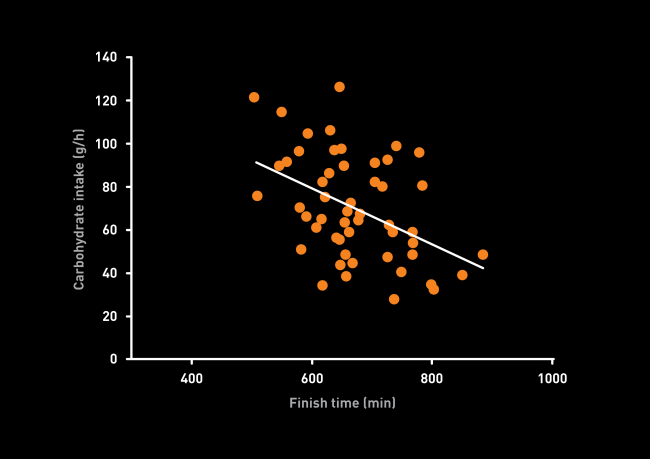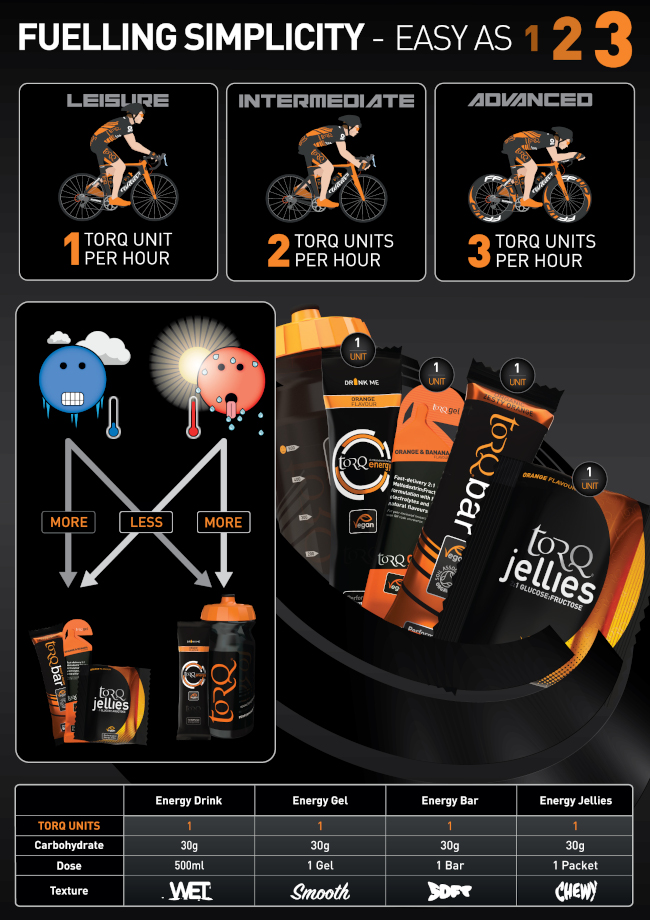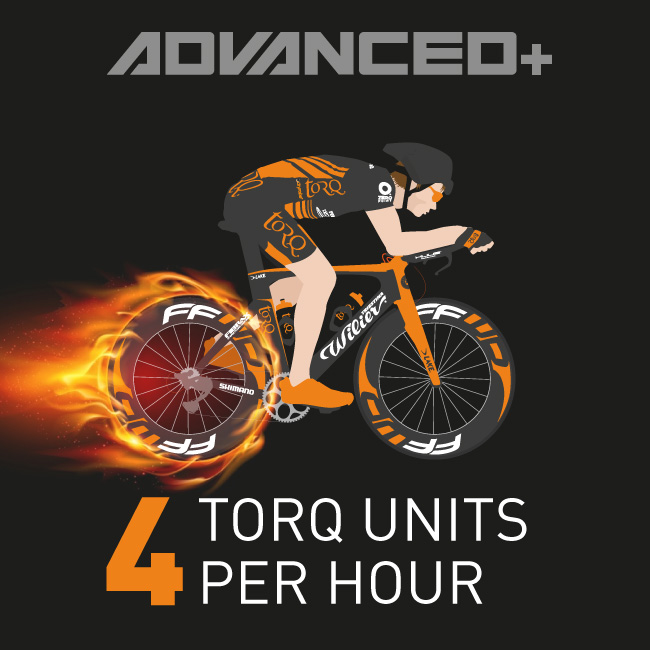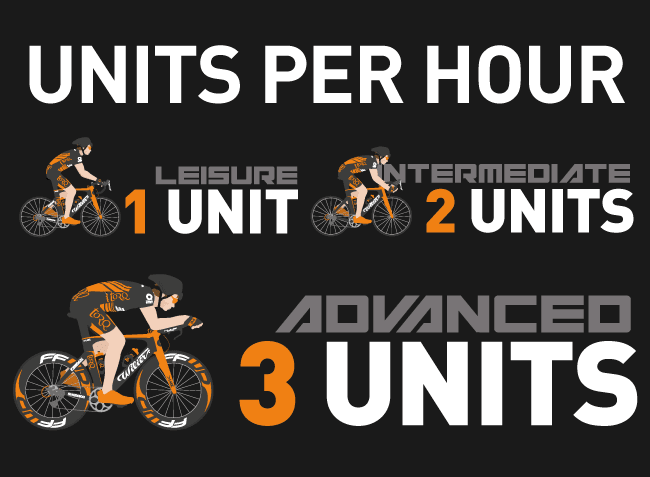The world of professional sport is an environment in which the word “stagnation” sends shivers down the spines of athletes. The investment in new cutting-edge practices forever pushes the boundaries of performance and nutrition is one area that is being forever refined. Optimised nutrition is allowing athletes to go faster, further and recover more quickly than ever before.
Carbohydrate Ingestion Rates in Professional Sport
With elite athletes being able to cycle, run and swim faster than ever before, the energy requirements for these efforts is also increasing and with that comes an increased need to take fuel onboard. It’s now frequently reported that elite athletes are pushing the scientifically recommended carbohydrate ingestion rates from 60-90g per hour to 120g per hour. So, what does the data suggest about these exceptionally high carbohydrate ingestion rates?
A study from Pfeiffer et al., (2012) aimed to gather data insights into the nutritional practices of athletes in a real-world setting. The study documented fuel and fluid intake during professional Ironman races and explored how these nutritional interventions are linked to Ironman finishing times and the development of gastro-intestinal (GI) distress.
The graph below shows data collected from Ironman Hawaii 2009. With each dot representing an individual athlete, you can see how those who consumed more carbohydrate typically completed the Ironman in a faster time. Interestingly, the athlete who ingested 120g of carbohydrate per hour was the fastest to finish, although it can’t be ignored that the second fastest to finish consumed considerably less (around 80g per hour). The trend however, which must not be overlooked, is that there was certainly a correlation between high carbohydrate ingestion and better finishing time. Interestingly, the high carbohydrate practices the athletes were implementing here were actually well ahead of the research as there were no official recommendations for these levels of intakes.

But what about stomach upset, or what’s more scientifically referred to as gastrointestinal (GI) distress? Well, the prevalence of GI distress did increase as the carbohydrate ingestion rates increased, with the study suggesting that this was most likely down to factors such as dehydration as well as the overconsumption of carbohydrates, which we will discuss in more detail later.
In line with these practices being well ahead of the research, the research team in the Pfeiffer et al., (2012) study suggested that better advice was needed to support athletes to make more informed nutritional choices, especially when ingesting such high rates of carbohydrate. This type of education would help athletes determine a nutritional strategy that would support the specific physical/environmental demands of certain training sessions or races to maximise performance and/or training adaptation.
Skipping forward to the present day, this is a strategy that we see being implemented far more frequently – a concept known as “periodised nutrition”. Here athletes look at the demands of a days’ training sessions ahead of schedule and adapt their nutritional strategy accordingly, paying particular attention to their carbohydrate and hydration requirements.
Current Carbohydrate Recommendations
Variable hourly carbohydrate recommendations exist based upon the intensity and duration of the exercise session. It’s only in extreme circumstances where we see the established recommendations of 30g–90g of carbohydrate per hour being exceeded to reach 120g per hour.
At this point, you may be wondering what 30g, 60g, 90g or 120g of carbohydrate per hour looks like? Allow us to introduce you to the TORQ Fuelling System, a fuelling guide meticulously refined over 15 years and moulded by sports and exercise science research. The TORQ Fuelling System has been painstakingly engineered to support the energy and hydration demands of the body during training and racing. Each TORQ fuelling product, be it 500ml of Energy Drink, an Energy Gel, Energy Bar or Energy Jellies pack contains 30g of carbohydrate, or 1 TORQ Unit. Below we take a look at some specific exercise examples, helping you to understand how many TORQ units you should be aiming to consume per hour:
1 TORQ Unit (30g Carbohydrate): If you’ve never really used energy and hydration products in a structured way before, start with just 1 TORQ Unit per hour. If for instance, you’re completing a relaxed session at a sociable pace, but you plan on being out for a prolonged period of time, regularly consuming 30g of carbohydrate will help you to enjoy the experience and you won’t feel so drained after you’ve finished.
If you do choose to try 1 TORQ Unit per hour and find that you run out of energy towards the end of your exercise session, consider moving up to 2 TORQ Units per hour on the following occasion and see if this fixes the problem. You don’t just have to be a novice to consider consuming 1 TORQ Unit per hour either. You could be a serious athlete, but the exercise session you have planned is so low in intensity that you require a much lower level of fuelling than you would if the intensity/duration were to be higher.
2 TORQ Units (60g Carbohydrate): If you’ve used energy products before and really want to notice a difference in your endurance performance, stick diligently to 2 TORQ Units per hour. This will deliver some noticeable results, extending time to exhaustion (you’ll last longer) and will afford you a higher pace (you’ll be able to push harder and faster). 2 TORQ Units per hour is a comfortable and effective level of fuelling and represents our default position here at TORQ, because many people we speak to chronically under-fuel and 60g per hour gets them to a solid and progressive fuelling position.
3 TORQ Units (90g Carbohydrate) Consuming 90 grams of carbohydrate per hour has long been considered optimal for brands combining glucose derivatives with fructose at a 2:1 ratio as TORQ does. It’s at 3 TORQ Units per hour where the TORQ Fuelling System starts to deliver the highest levels of performance. In the same way that a highly tuned sports car has to burn more fuel to deliver the performance the driver needs, if you want the best physical performances, the more fuel you can deliver to your muscles, the faster and further you will go.

4 TORQ Units Per Hour?
A study by Virbay and colleagues (2020) demonstrated that 120g per hour of carbohydrate consumption was achievable via a 2:1 glucose-derivatives:fructose ratio formulation. The research highlighted that mountain marathon runners absorbed a very high dose (120g per hour) of carbohydrate from a 2:1 formulation, exactly the same carbohydrate formulation found within TORQ’s Fuelling System product range and experienced little to no gastric upset in a real life race-paced mountain marathon event.
Prior to this event, all 26 elite/professional mountain marathon runners completed a 3-week bout of nutritional training, where the athletes would complete their weekly training commitments. During this time, they added nutritional progression by increasing the amount of carbohydrate consumed within each training session until they found themselves comfortable at ingesting 120g of carbohydrate per hour, equivalent to 4 TORQ Units per hour. A major finding of this study was that biochemical markers of muscle damage in the 120g per hour group were significantly lower than groups consuming 60–90g of carbohydrate per hour. This highlights that as well as the potential fuelling benefit, muscle fatigue is likely to have been reduced, offering stronger potential for exercise performance to be maintained during longer duration events, but also holds significance for races where limited periods of recovery are key to the race outcome, such as multi-day stage racing.

120g Per Hour Disadvantages?
A recent study by Podlogar and colleagues (May 2022) looked at oxidation rates (carbohydrate burn rate) and fuel utilisation (from carbohydrates and fats) whilst comparing the consumption of 120g per hour of a 1:0.8 Maltodextrin:Fructose formulation with 90g per hour of a 2:1 Maltodextrin:Fructose formulation (maltodextrin is another name for glucose). We’re not quite sure why the study design compared two different carbohydrate ratios at two different intakes as this made functional comparisons between the two ratios impossible. Ideally the study could have looked at the variables of ‘amount’ and ‘formulation’ of carbohydrate separately.
The study found that whilst carbohydrate oxidation rates (burn rates) were higher in the 120g per hour group, fat utilisation dropped and was higher in the 90g per hour group. This drop-off in fat mobilisation is significant and meant that the 120g per hour group simply suppressed fat breakdown and increased carbohydrate metabolism whilst receiving no performance advantage. The study concluded that the 120g per hour group didn’t benefit from any carbohydrate-sparing effect, despite consuming 30g more per hour – carbohydrate sparing is the sole purpose of fuelling with carbohydrate in the first place. As the 120g per hour group used a 1:0.8 Maltodextrin:Fructose formulation and the 90g per hour group used a 2:1 Maltodextrin:Fructose formulation, we don’t know if the 2:1 ratio would have similarly switched off fat metabolism like the 1:0.8 formulation did at 120g per hour? We also don’t know if the 1:0.8 formulation would have down-regulated fat metabolism in the 90g per hour group?
During endurance exercise, both fats and carbohydrates are burned as fuels. Notably, fat is held in a practically limitless supply within the human body, so there is no logic to following a carbohydrate fuelling strategy that forces the body to burn less of this abundant fuel. Let’s not forget that most training programs spend a huge amount of time developing the aerobic foundation allowing us to burn more of this abundant fuel.
In addition, the researchers noted that both stomach fullness and feelings of nausea were higher in the 1:0.8 group which could be attributed to overconsumption, but may have been due to the formulation. This is supported by the data that showed in the last 60 minutes of the experimental trials that 86% of the ingested carbohydrate in the 2:1 group was burnt as a fuel, but in the last hour of the 1:0.8 condition, only 76% was burnt as a fuel, suggesting that carbohydrate was backing up in the gastro intestinal tract.
As it stands, the two studies that have proven performance advantages at 120g carbohydrate consumption per hour have observed real-life athletes in real-world conditions – Pfeiffer et al., (2012) and Virbay et al., (2020) and the second study definitively observed a 2:1 formulation.
Training The Gut For 120g Per Hour
We cover the topic of gastrointestinal training in-depth in our Training the Digestive System article. However, we will touch on how the mechanisms of gut training may have helped participants in the study from Virbay and colleagues (2020) to consume 120g per hour with very little GI distress.
A study from Cox et al., (2010) saw two groups train 16 hours per week for 28 days. One group consumed a moderate carbohydrate diet, achieving 5g/kg body weight of carbohydrate a day. This carbohydrate was consumed during exercise and outside of the exercise window. The second group was named the ‘high carbohydrate group’. This group had the same baseline diet of 5g/kg body weight of carbohydrate per day, but they also received an additional 1.5g/kg body weight of carbohydrate per hour from a glucose-only drink during exercise (purposely exceeding the known glucose absorption threshold of 60g/hr).
After 28 days, both groups completed a 100-minute steady state ride at a moderate exercise intensity while consuming a high carbohydrate glucose-only drink. The main outcome of this study was that the group that consumed the high carbohydrate diet with a high energy glucose drink during exercise were able to absorb and burn more carbohydrate during the exercise test, while there was no change for the control group. The reason for this increase in oxidation (burn rate) may have been due to an increase in the activity of the SGLT-1 glucose transporter (a glucose transporter in the intestinal wall), allowing for a greater absorption and delivery of carbohydrate to the blood and thus the muscles.
Although the amount of glucose burnt in this study did not exceed much beyond the known glucose threshold of 60g per hour, increasing only to a modest 63.6g from 54g, the data did suggest that glucose transportation could be trained leading to a better GI tolerance level. This resulted in less carbohydrate backing up in the intestinal tract and more carbohydrate being delivered as a fuel. We can confidently extrapolate from these findings and those of the more recent Virbay et al, study that the intestinal transporter for fructose (GLUT-5) is also likely to have the capacity to be trained to tolerate higher fructose volumes than previously thought.
In short, the research points towards ensuring that you practice at 4 TORQ Units per hour if you want to consume these levels in competition.

Along with the article mentioned at the top of this section, you may also be interested in our article Don’t Fuel Gastric Discomfort.
Don't Neglect Hydration
When ingesting high rates of carbohydrate, your margins for error with respect to the fuelling/hydration seesaw become ever tighter, so it’s important to get this balance right. In low-perspiration conditions, this isn’t such an issue, but in scenarios where perspiration rates are high – exercising in the heat and/or during high intensity activity – it’s vital that you take on board sufficient fluid along with your carbohydrate or you will experience GI issues as the carbohydrate backs up in your digestive system.
When we ingest carbohydrate, whether this be a via a TORQ product or any other form, the carbohydrate must be transported from the small intestine to the blood and unlike water, carbohydrate doesn’t have the ability to pass through the intestinal wall via passive transport (osmosis). As we discussed in the last section, there are different transporters for different types of carbohydrate situated in the intestinal wall, but the important one from a fuelling and hydration perspective is SGLT-1 (sodium, glucose transporter 1). As the name suggests, for the transporter to function we need both glucose (carbohydrate) and sodium present. With every rotation of this transporter, 2 glucose molecule and 1 sodium molecule are dispatched into the blood along with a whopping 260 water molecules! Therefore, it’s easy to see that if we become dehydrated, the water isn’t available for the SGLT-1 transporter to function correctly – the result being that carbohydrate backs up in the gastrointestinal tract and GI distress starts to develop.
You can see the glucose transporter in action by viewing the short animation below.

To further explain the significance of water and its role in carbohydrate absorption, should you have a high concentration of carbohydrate in your gut without sufficient water availability, it is a natural process for your body to draw water out of your blood into the intestine to facilitate the above process. In low-perspiration conditions, this is perfectly acceptable, you will absorb the carbohydrate and enjoy all the fuelling benefits. In high-perspiration conditions, it really is undesirable for water to be lost from the blood to digest carbohydrate in the gut, so this creates a water-use paradox, resulting in further dehydration and GI issues. The blood is already running thicker due to water lost via perspiration, so has nothing more to give. The result is poor carbohydrate absorption, compromised fuelling, GI upset and the performance-flattening impacts of dehydration.
This is why the TORQ Fuelling System has never been solely about fuelling with carbohydrate, it has always addressed hydration in equal measure. The diagram below shows how important it is to ‘drink your calories’ in higher perspiration conditions. This does bring into question the feasibility of fuelling with 120g of carbohydrate per hour in particularly hot conditions, especially when exercise intensities are high.

If you would like to learn more about the importance of hydration and the balance that needs to be struck between hydration and fuelling, you might want to read the following articles:
Hydration: The Definitive Guide
Isotonic, Hypotonic or Hypertonic
Should I Consume 120g Per Hour?
There is growing evidence suggesting that some athletes can tolerate up to 120g of carbohydrate (4 TORQ Units) per hour and that this may enhance performance. This rate of fuelling may be beneficial for elite athletes and for highly competitive multistage events and races. However, research is still unclear about how athletes manage to handle such large amounts of fuel and whether there is a true performance advantage. The key takeaway is that consuming very high rates of carbohydrates should be approached gradually, allowing your gut time to adapt. It’s also important to remember that just because some athletes can tolerate more than 90 grams of carbs per hour, it doesn’t necessarily mean that everyone should target that level of fuelling.
Also, we must remember that fuelling recommendations are built upon training intensity and duration, so unless training intensity and duration is exceptionally high, it’s unlikely that there is a need to achieve such high fuelling rates. From our 25-year experience, we also know that it’s rare to see people consistently achieve the traditional 60g per hour, let alone the 90g per hour recommended targets, so we believe that staying within established tried and tested guidelines should be the first step towards optimising your fuelling. As the saying goes, you need to learn to walk, before you can run. That said, if you know that you can tolerate these exceptionally high ingestion rates, and your training session or race demands high rates of fuelling, then we see no problem fuelling with 4 TORQ Units per hour. Even if there are no carbohydrate-sparing advantages, the evidence suggests reduced markers of muscle damage and this has to be a good thing, especially on multi-day events.
You could even consider fuelling at 4 TORQ Units per hour for intense spells within a longer endurance race meaning that the higher ingestion levels aren’t necessarily uniform throughout the event – in the Sports Science world, this is called ‘fuel for the work required.’ Also note the challenges that exist in scenarios where perspiration rates are particularly high as it may not be realistic to consume 120g of carbohydrate per hour. 90g per hour (3 TORQ Units) with sufficient hydration is likely to provide a better overall performance in this situation, as well as being more comfortable on the stomach and potentially safer.

For further information on this subject, read our Understanding Glucose:Fructose Ratios article.
To purchase TORQ’s Fuelling System Products, click HERE.
If you have any question about this or any other article on this website, please do not hesitate in contacting us on enquiries@torqfitness.co.uk or phone 0344 332 0852.
References
Pfeiffer, B., Stellingwerff, T., Hodgson, A.B., Randell, R., Pöttgen, K., Res, P. and Jeukendrup, A.E., 2012. Nutritional intake and gastrointestinal problems during competitive endurance events. Medicine & Science in Sports & Exercise, 44(2), pp.344-351
Jeukendrup, A., 2014. A step towards personalized sports nutrition: carbohydrate intake during exercise. Sports medicine, 44(Suppl 1), pp.25-33.
Viribay, A., Arribalzaga, S., Mielgo-Ayuso, J., Castañeda-Babarro, A., Seco-Calvo, J. and Urdampilleta, A., 2020. Effects of 120 g/h of carbohydrates intake during a mountain marathon on exercise-induced muscle damage in elite runners. Nutrients, 12(5), p.1367.
Loo, D.D., Zeuthen, T., Chandy, G. and Wright, E.M., 1996. Cotransport of water by the Na+/glucose cotransporter. Proceedings of the National Academy of Sciences, 93(23), pp.13367-13370.
Cox, G.R., Clark, S.A., Cox, A.J., Halson, S.L., Hargreaves, M., Hawley, J.A., Jeacocke, N., Snow, R.J., Yeo, W.K. and Burke, L.M., 2010. Daily training with high carbohydrate availability increases exogenous carbohydrate oxidation during endurance cycling. Journal of Applied Physiology, 109(1), pp.126-134.






